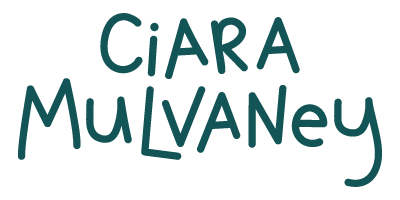How to Create Great Logos
I take on a lot of different roles, from graphic designer to videographer and photographer. But no matter the project before me, I am at the heart of every brand that I cultivate. So it is no surprise that my favorite thing to work on are logos because they create a narrative for a brand that is yet to be established.
Over the years, I have been asked to make many brandmarks for clients. Some good. Some bad. But through every edit, I have picked up some tips and tricks on what makes a good logo.
DON’T GIVE INTO TRENDS
As we move through design history, certain trends take over to create a temporary template for many designers to copy over and over again. Most of the time this happens when a client wants to stay “in trend”. If you’ve come to this point, STOP! You want to create a brand that is unique and in line with your client’s message. Sometimes you are unable to do this when you take on what’s popular. Skip the latest fashion trends and pull inspiration from brands that have stood the test of time.
TYPE IS KING
Quite simply, the best logos have been created through the showcasing of the brand’s name along. Look at FedEx, Absolut Vodka, and Visa. Which leads me to my next tip.
KEEP IT SIMPLE STUPID
Simplicity is key. By taking on this elementary way of thinking you create a brand that gets straight to the heart of it’s goal-establishing a brand that people recognize instantly. Allow the brand to develop on its own throughout the ages. The logo is meant to remind the user of who you are but let the rest of your collateral do the heavy lifting.
CONSIDER PRINTING COSTS
As designers, we love color and the ability to use it in everything we do. Consequently, we forget to make things “printer friendly” in an age where digital assets are taking over. When making a logo, you must consider where the logo will go in the future. Will it be embroidered on hats? Screenprinted on t-shirts? If you answered yes to any of these questions, you must create a logo that is easily identifiable when color is not present. Always make sure your logo can transform to a monotone version without losing its identity.
KEEP THE BALANCE
Sometimes with client input and rushed deadlines, this can easily be forgotten but within everything you do, symmetry is key. A slight shift to the right and the logo can look unbalanced and topsy turvy. By keeping in tune with the basic rules of composition, a logo can go from being harsh on the eyes to pleasant to look at.
COLOR WITH MEANING
Every color comes with meaning. Spanning over hundreds of years, the art of color and meaning plays a role in modern design. Take this into consideration when picking your perfect color palette.
Red: passion, heart, health Industry: Health Services, Advertising/Marketing
White: purity, neutral Industry: Publishing
Purple: royalty, creative Industry: Start-Ups, Education
Blue: dependable, strength, honest Industry: Transportation, Construction, Manufacturing
Green: nature, wisdom, wealth Industry: Agricultural, Banking
Yellow: happiness, warmth Industry: Food Services
Orange: friendly, cheerful Industry: Hospitality, Retail
CONSIDER YOUR AUDIENCE
And of course, don’t forget who is going to see this logo. Make the brand reflect the target audience, not the client. Yes, they want something that represents who they are as a brand, but most importantly, its needs to engage the audience that will buy their product.




